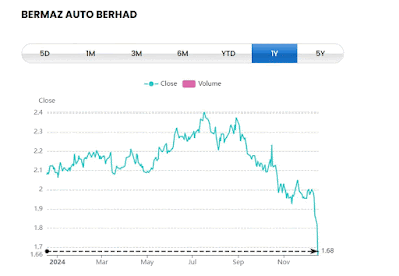黑色星期一(5/8/2024)后的这几天,各种财经媒体开始评论这次的黑天鹅事件的起因。我注意到传统财经媒体似乎都把矛头指向 Carry Trade (译为:套利交易)这种交易方式。
从The Edge 摘来的一段分析:
Instead, the answer likely lies in a further sharp position unwind of
carry trades, where investors have borrowed money from economies with low interest rates such as Japan or Switzerland, to fund investments in higher-yielding assets elsewhere.
They have been caught out as the Japanese yen has rallied by more than 11% against the dollar from 38-year lows hit just a month ago.
"In our assessment a lot of this (market sell-off) has been down to position capitulation as a number of macro funds have been caught the wrong way around on a trade, and stops have been triggered, initially starting with FX and the Japanese yen," said Mark Dowding, chief investment officer at BlueBay Asset Management, referring to pre-determined levels that trigger buying or selling.
什么是 Carry Trade 呢?
A carry trade is a trading strategy that involves borrowing at a low-interest rate and investing in an asset that provides a higher rate of return. A carry trade is typically based on borrowing in a low-interest rate currency and converting the borrowed amount into another currency. Generally, the proceeds would be deposited in the second currency if it offers a higher interest rate. The proceeds also could be deployed into assets such as stocks, commodities, bonds, or real estate that are denominated in the second currency.
- The risk of a sharp decline in the price of the invested assets
- The implicit exchange risk, or currency risk, when the funding currency differs from the borrower’s domestic currency
如果以上的术语解释,我们这些普通人不明白,是情有可原的。没有关系。这里就举出我们个人在生活上会遇到的例子:
你是否曾受到诱惑,为了投资于收益率更高的资产,而接受信用卡发行商提供的有限期的 0% 现金透支?这种策略就是“套利交易”的诱惑。
许多信用卡发行商以六个月到一年不等的 0% 利息诱惑消费者,但他们要求消费者预付统一的 1% "交易费"。以 1%作为预支 10,000 美元现金的资金成本,假设投资者将这笔借款投资于利率为 3%的一年期存单(CD)。这样的套利交易将带来 200 美元(10,000 美元 x [3%-1%])或 2% 的利润。尽管利差交易可能带来潜在的财务回报,但这种策略也可能带来巨大的风险。
现在你明白什么是 Carry Trade 了吗?明白了为什么会发生黑色星期一了吗?













































